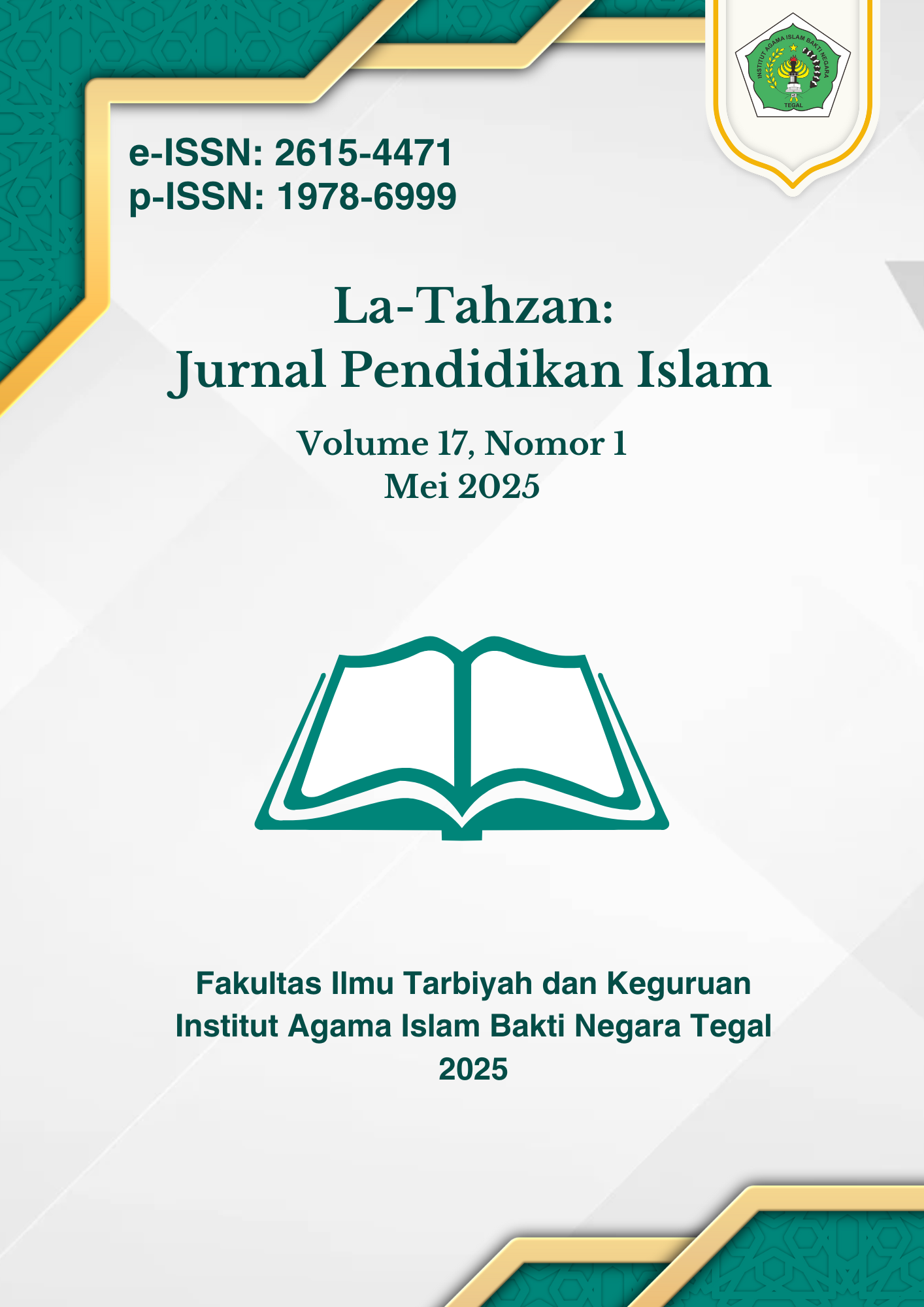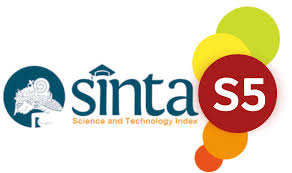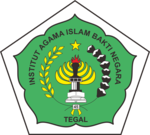Peran Public Speaking dalam Mengembangkan Keterampilan Komunikasi Siswa di SDN Panglegur 2
DOI:
https://doi.org/10.62490/latahzan.v17i1.1105Keywords:
Public Speaking, Communication Skills, Elementary School Students, Learning, Self-ConfidenceAbstract
This study aims to determine the role of public speaking in developing students' communication skills at SDN Panglegur 2. Public speaking is one of the effective learning methods in improving public speaking skills, courage to express opinions, and building students' self-confidence from an early age. This study uses a descriptive qualitative approach with data collection techniques through observation, interviews, and documentation. The results of the study indicate that the implementation of structured public speaking activities, such as class presentations, storytelling, and short speeches, can significantly improve students' verbal communication skills. In addition, students become more active in discussions, are able to convey ideas clearly, and show an increase in the use of effective language. These findings indicate that public speaking has an important role in the learning process and development of students' interpersonal communication at the elementary school level. Therefore, it is recommended that public speaking activities be integrated continuously into the learning curriculum.
References
Ahmad, J. (2018). Desain penelitian analisis isi (Content analysis). Research Gate, 5, 1–20.
Anggraini, R., Pane, S. R., & Fatmawati. (2025). Gangguan Berbicara dalam Praktik Mengajar Mahasiswa Kajian: Psikolinguistik. Jurnal Lingkar Pembelajaran Inovatif, 6.
Asriandhini, B., Khasidah, M. N., & Kristika, P. N. (2020). Pelatihan dasar public speaking untuk mengembangkan keterampilan penyampaian informasi dan kepercayan diri bagi siswa tunarungu. Jurnal Loyalitas Sosial, 2.
Elmi, M., Erna, S., Asshofarul, M., & Heny, K. (2023). Strategi Pengelolaan Kelas Dalam Meningkatkan Proses Dan Hasil Pembelajaran Yang Efektif Dan Efisien. Journal of Student Research, 1.
Fathoni, T., Asfahani, A., Munazatun, E., & Setiani, L. (2021). Upaya Peningkatan Kemampuan Public Speaking Pemuda Sragi Ponorogo. Amalee: Indonesian Journal of Community Research and Engagement, 2(1), 23–32. https://doi.org/10.37680/amalee.v2i1.581
Harahap, N. (2020). Penelitian Kualitatif (1st ed.; H. Sazali, ed.). Medan: Wal ashri Publishing. Juita, E. (2020). Meningkatan Kemampuan Siswa dalam Memahami Teks Narrative dengan Menggunakan Metode Role Playing. Journal of Education Informatic Technology and Science (JeITS), 2.
Jalal, N. M., Gaffar, S. B., Syam, R., Syarif, K. A., & Idris, M. (2023). Pemberian Pelatihan Public Speaking Untuk Meningkatkan Kepercayaan Diri Dan Keterampilan Presentasi Di Depan Umum. Jurnal Abdimas Indonesia, 3(2), 192–200. https://doi.org/10.53769/jai.v3i2.460
Listiana, H., Muhlis, A., & Vargheese, K. J. (2023). The Development Model of the Digital Based Madrasah Diniyah at Islamic Boarding School Padepokan Kyai Mudrikah Kembang Kuning. Tadris: Jurnal Pendidikan Islam, 18.
Nurhalisa, S., & Kamaruddin, S. A. (2024). Educational Innovation in Increasing Business Creativity Through Public Speaking Class. Pinisi Journal of Art, Humanity, and Social Studies, 4.
Permana, R., & Aminah, R. S. (2023). Pengembangan Soft Skill “Public Speaking” Bagi Guru dan Terapis Anak Berkebutuhan Khusus di Yayasan Assalam Cendekia. Abdimas Galuh, 5.
Prihadi, M. D. (2021). Public speaking dalam pengembangan sumber daya manusia pendidikan. Jurnal Syntax Imperatif: Jurnal Ilmu Sosial Dan Pendidikan, 2.
Rahayu, F. R. (2023). Strategi Komunikasi Efektif Guru dalam Membentuk Kepercayaan Diri Siswa di MTs YPK Cijulang. Jurnal Pelita Nusantara, 1..
Riwayatiningsih, R., Wicaksono, A., Khoiriyah, K., Sulistyani, S., & Puji, M. (2021). Meningkatkan keterampilan komunikasi guru bahasa Inggris di Kediri melalui pelatihan public speaking. Kontribusi: Jurnal Penelitian Dan Pengabdian Kepada Masyarakat, 1.
Rustandi, Y. (2022). Optimalisasi Kemampuan Berbicara Di Depan Publik Untuk Peningkatan Profesionalisme Guru Di Yayasan Pendidikan Islam Al Bashry Kalapanunggal Sukabumi. Jurnal Abdimas Gorontalo (JAG), 5.
Said, S. (2023). Peran teknologi digital sebagai media pembelajaran di era abad 21. Jurnal PenKoMi: Kajian Pendidikan Dan Ekonomi, 6.
Serungke, M., Sibuea, P., Azzahra, A., Fadillah, M. A., Rahmadani, S., & Arian, R. (2023). Penggunaan media audio visual dalam proses pembelajaran bagi peserta didik. Jurnal Review Pendidikan Dan Pengajaran (JRPP), 6.
Sinaga, A. V. (2023). Peranan teknologi dalam pembelajaran untuk membentuk karakter dan skill peserta didik abad 21. Journal on Education, 6.
Siregar, Y. (2024). Meningkatkan Kemampuan Public Speaking Siswa dengan Gamifikasi. 2.
Suwarni, S. (2022). Peran budaya sekolah dalam menciptakan lingkungan belajar yang kondusif. ITQAN: Jurnal Ilmu-Ilmu Kependidikan, 13.
Wati, S. N. Q., & Utami, R. D. (2022). Melatih Kemampuan Public Speaking Siswa Sekolah Dasar Melalui Model Quantum Teaching. Jurnal Basicedu, 6.
Wijaya, E. Y., Sudjimat, D. A., & Nyoto, A. (2016). Transformasi pendidikan abad 21 sebagai tuntutan pengembangan sumber daya manusia di era global. Prosiding Seminar Nasional Pendidikan Matematika, 1.
Wulandari, A. D., & Nurjaman, A. R. (2023). Analisis peran guru dalam menciptakan lingkungan belajar yang kondusif di kelas 2 SDN Cimekar. Daya Nasional: Jurnal Pendidikan Ilmu-Ilmu Sosial Dan Humaniora, 1.
Zainal, A. G. (2022). Public Speaking (Cerdas Saat Berbicara di Depan Umum). In F. S. Singagerda (Ed.), Eureka Media Aksara. Eureka Media Aksara.
Zulfahira, Z., Azzahra, R., Safana, S., Jamaluddin, J., & Isgunandar, I. (2024). Peningkatan Kualitas Pembelajaran Public Speaking Melalui Powerpoint. Jurnal Lamellong: Pengabdian Kepada Masyarakat (JLPM).
Zulhendra, Z., Repelita, T., Lahay, C., & Hendra, W. (2024). Strategi Penggunaan Kalimat Efektif Dalam Dakwah Untuk Meningkatkan Pemahaman Audiens. Jurnal Review Pendidikan Dan Pengajaran (JRPP), 7.
Downloads
Published
How to Cite
Issue
Section
License
Copyright (c) 2025 La-Tahzan: Jurnal Pendidikan Islam

This work is licensed under a Creative Commons Attribution-ShareAlike 4.0 International License.
The copyright of the received article shall be assigned to the journal as the publisher of the journal. The intended copyright includes the right to publish the article in various forms (including reprints). The journal maintains the publishing rights to the published articles.
In line with the license, authors and any users (readers and other researchers) are allowed to share and adapt the material. In addition, the material must be given appropriate credit, provided with a link to the license, and indicated if changes were made. If authors remix, transform, or build upon the material, authors must distribute their contributions under the same license as the original.
















